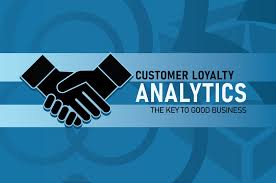Unlocking Growth with Customer Loyalty Analytics

In today’s competitive market, retaining loyal customers is more important than ever. Loyal customers not only drive repeat business but also become brand advocates, bringing in new customers through recommendations. Customer loyalty analytics is a powerful tool that helps businesses understand, measure, and enhance customer loyalty. By leveraging data-driven insights, companies can develop strategies to retain their most valuable customers and foster long-term growth.
What is Customer Loyalty Analytics?
Customer loyalty analytics involves the use of data and advanced analytics tools to track, measure, and predict customer loyalty behaviors. It provides insights into what drives customer retention, satisfaction, and advocacy. This data is essential for identifying high-value customers, tailoring marketing efforts, and improving overall customer experiences.
Why is Customer Loyalty Analytics Important?
- Improved Retention Rates Retaining existing customers is more cost-effective than acquiring new ones. Loyalty analytics helps businesses understand why customers stay and what factors contribute to churn, enabling proactive retention strategies.
- Personalized Customer Experiences Analyzing customer loyalty data allows businesses to tailor experiences based on individual preferences and behaviors, enhancing customer satisfaction and fostering loyalty.
- Increased Revenue Loyal customers are more likely to make repeat purchases and spend more over time. By identifying and nurturing these customers, businesses can drive consistent revenue growth.
- Enhanced Decision-Making Data-driven insights from loyalty analytics enable businesses to make informed decisions about marketing strategies, product offerings, and customer engagement initiatives.
Key Metrics in Customer Loyalty Analytics
- Customer Retention Rate (CRR) CRR measures the percentage of customers a business retains over a specific period. High retention rates indicate strong loyalty and satisfaction.
- Net Promoter Score (NPS) NPS gauges customer satisfaction and likelihood of recommending the brand. A higher score reflects stronger loyalty and advocacy.
- Customer Lifetime Value (CLV) CLV estimates the total revenue a customer generates throughout their relationship with the brand. Understanding CLV helps prioritize high-value customers.
- Churn Rate Churn rate measures the percentage of customers who stop doing business with a company during a specific time frame. Lower churn rates indicate better loyalty.
- Repeat Purchase Rate This metric tracks the frequency of repeat purchases, providing insight into customer loyalty and engagement.
How to Implement Customer Loyalty Analytics
- Gather Data Collect data from all customer touchpoints, including purchase history, website interactions, social media engagement, and feedback surveys. Ensure the data is accurate and comprehensive.
- Use Advanced Analytics Tools Invest in analytics platforms that specialize in customer loyalty. These tools can track metrics, segment customers, and generate actionable insights.
- Segment Your Customers Group customers based on loyalty levels, behaviors, and preferences. Segmentation helps in creating targeted strategies for each group.
- Analyze and Act Use the insights from your analytics to identify trends and opportunities. Implement strategies to reward loyal customers, re-engage at-risk customers, and improve overall satisfaction.
- Monitor and Refine Continuously track loyalty metrics and adjust your strategies based on performance. Regular updates ensure your loyalty programs remain effective and relevant.
Benefits of Customer Loyalty Analytics
- Stronger Customer Relationships Understanding customer preferences and behaviors fosters deeper relationships, building trust and long-term loyalty.
- Cost Savings Retaining existing customers reduces the need for expensive acquisition campaigns, saving resources while driving growth.
- Competitive Advantage Businesses that effectively leverage loyalty analytics can differentiate themselves by delivering superior customer experiences.
- Higher ROI on Marketing Efforts Targeted campaigns based on loyalty insights yield better results, maximizing the return on marketing investments.
Real-World Applications of Customer Loyalty Analytics
- Retail Retailers use loyalty analytics to optimize rewards programs, personalize offers, and improve in-store and online experiences.
- E-Commerce Online retailers leverage loyalty data to recommend products, tailor promotions, and enhance customer journeys.
- Hospitality Hotels and restaurants use analytics to reward frequent guests, enhance guest experiences, and drive repeat visits.
- Subscription Services Subscription-based businesses analyze loyalty metrics to reduce churn, improve engagement, and upsell additional services.
Conclusion
Customer loyalty analytics is an indispensable tool for businesses aiming to build long-lasting relationships with their customers. By tracking and analyzing loyalty metrics, companies can enhance retention, boost revenue, and gain a competitive edge. Whether you operate in retail, e-commerce, or hospitality, leveraging customer loyalty analytics can unlock growth opportunities and secure your position in a competitive market. Invest in loyalty analytics today to drive success and foster meaningful connections with your customers.
Leave a Reply
You must be logged in to post a comment.